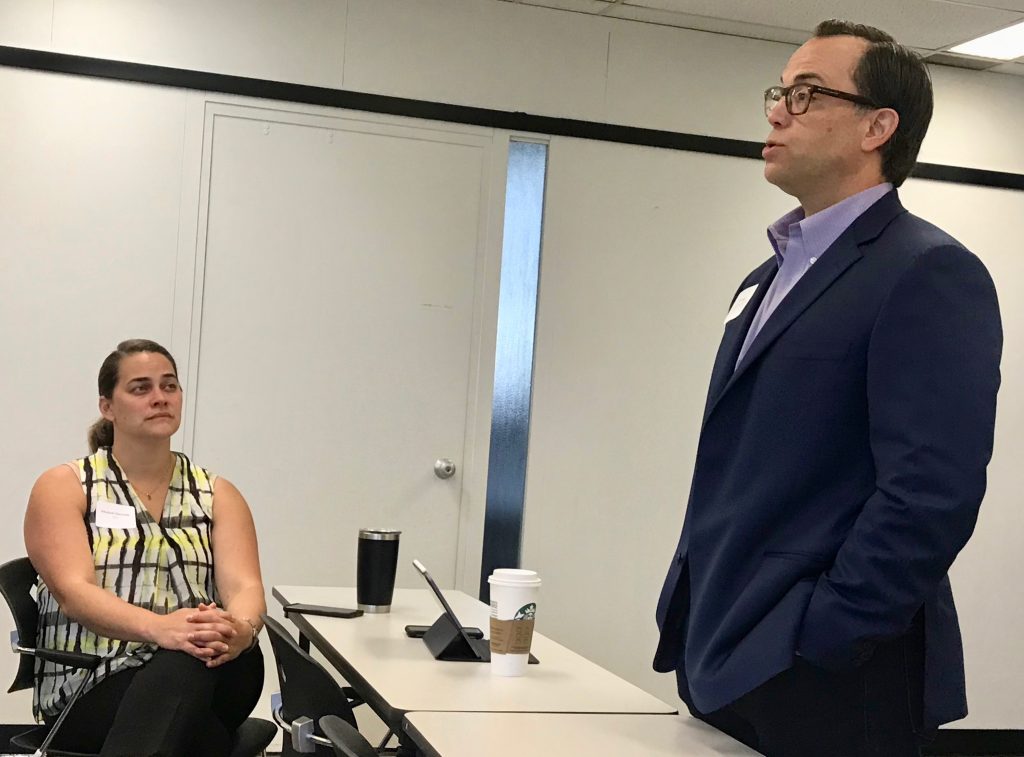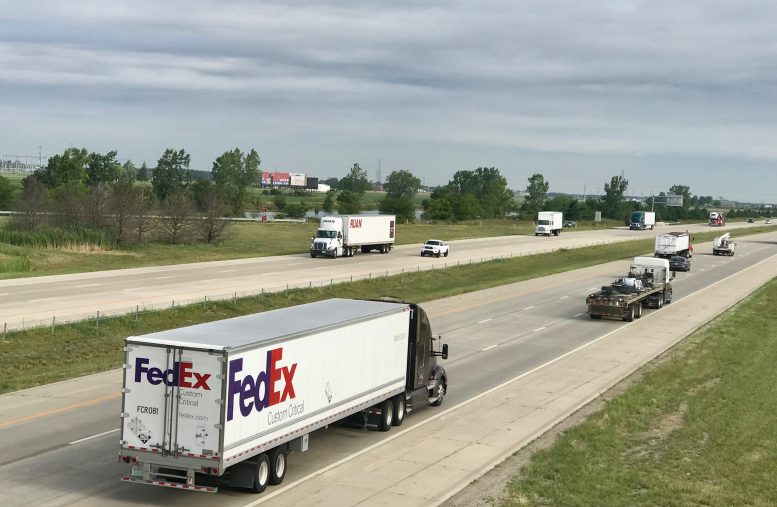By DAVID DUPONT
BG Independent News
Thomas Balzer, president and CEO of the Ohio Trucking Association, expects he’ll be dead before self-driving trucks hit the road.
“Are you ready to look up in the cab of a truck hauling 80,000 pounds, and nobody’s sitting behind the wheel?” Balzer posed that question during a talk at the Ag Breakfast last week. “Everyone cringes,” he said.

Not that he’s opposed to technology. He loves it, and self-driving technology has already led to safety improvements.
“There will always be a truck driver as long as I’m alive.” What those drivers are doing may change — they may not even have their hands on the wheel.
People may start noticing that trucks that don’t have mirrors. Cameras can eliminate blindspots.
The two most common accidents involving trucks are when a driver strikes another vehicle because they can’t see it. Cameras help with that.
The other is when someone rear ends a truck. Technology plays a role, a negative one, in that. With the advent of texting, there’s been an uptick in those crashes.
The technology is improving. Balzer said the 2014 accident that severely injured Tracey Morgan and killed fellow comedian James McNair would have been much worse if the truck that struck their limousine hadn’t been equipped with first generation adaptive cruise control. Now with the second generation technology it would not have happened, he said.
Looking further into the future, he said, he sees self-propelled trailers without cabs, or even trucks operated remotely the way the Air Force operates drones.
Right now finding drivers is the most pressing problem facing the industry. “Our biggest issue is workforce,” Balzer said. “We just don’t have enough people.”
The industry could hire 55,000 people now, and needs 250,000 within eight years.
“We can’t find people who can pass a drug test,” he said.
While less than 1 percent of drivers in the system fail the random drug tests, 40 percent are “not smart enough to stop smoking pot a week before applying for a job where you’re going to be drug tested,” he said.
The failure rate is so bad, trucking companies no longer pay for the drug tests, and instead require applicants to provide a clean test before they’ll take their application.
Getting more female drivers would help fill the gap, Balzer said. Currently 6 percent of drivers are women. “That’s embarrassing.”
Part of the problem is training. The industry is not allowed to put a female driver in a truck with a male trainer. While understanding the concerns, Balzer said, it puts the industry in a bind.
The industry is trying to get as many women into training positions as possible.
In general, he said, there’s a lack of applicants with the mechanical know how. He said he wonders where are the farm kids are.
Manual transmissions are still standard for trucking, though newer automatic transmissions are getting more reliable. Facing a 10-speed when they haven’t even driven a vehicle with a five-speed, can leave would-be drivers flummoxed.
And many young people are looking for a work-life balance that’s hard to achieve in a job where you’re on the road constantly.
The military offers a potential talent pool, he said, but more must be done to streamline the process through which veterans can earn their commercial driver’s licenses.
That’s just one aspect of government regulations that the industry must deal with. Sometimes those regulations don’t make sense in a real world environment.
Still, as a consumer, Balzer said, he appreciates the more stringent regulations covering the transport of food. Those have reached the point where a separate sector of the industry has sprung up just to service that market.
The driver’s time is one of the key places of contention. Drivers have 660 minutes to work from the time they get in the cab. If they have to wait a couple hours to have their trailer unloaded that’s time off the clock.
“If a driver’s wheels aren’t moving, they aren’t getting paid,” he said.
“Amazon has figured this out,” he said. The company bought 26,000 trailers, and zero trucks.
When they need a load hauled, they call the trucker, who comes hooks up the trailer and it’s on the road.
Traffic congestion is time killer for the driver.
Balzer said his association recognized the need for the state to find a way to fund highway repairs and construction. So they agreed to the 19-cent increase for the diesel tax. It was “a reasonable solution,” he said.
Not that he didn’t get calls from drivers after it went into effect. A truck averages six miles per gallon.
Balzer noted that every penny increase in the tax on diesel generates $16 million while a tax on gas generates $50 million.
Trucks account for about 10 percent of the miles driven, and pay 37 percent of the taxes.
More and more smaller vehicles will be used to make shorter haul deliveries, he said. The intermodal system linking trucking and rail is growing. If something has to be moved 500 miles, and it’s not time sensitive, rail is the way to go.
Still trucking isn’t going away, Balzer said. In Ohio, 82.2 percent of communities rely on trucks to bring in goods.
The industry, he said, keeps the economy rolling. With all the technological advances, Balzer said, “it’s an exciting time to be in the industry.”

